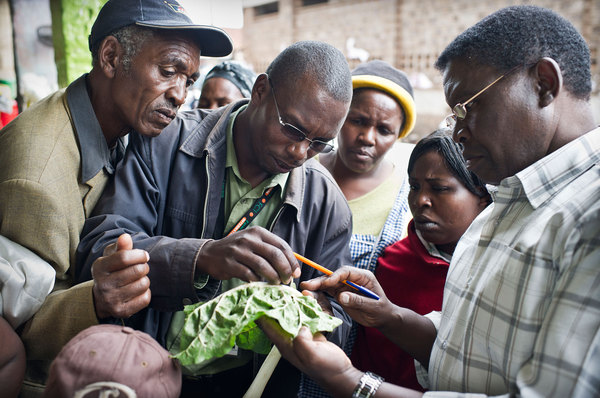Plantwise launches in Ghana
Plantwise, a global initiative run by CABI, was launched in Accra, Ghana last week. The initiative involves establishing plant clinics, which farmers can attend to get advice on plant health from trained plant doctors. In addition to the knowledge they acquire through the training programmes, these plant doctors can make use of the Plantwise Knowledge…
What CABI Is Doing To Tackle Major Coffee Rust Outbreaks In Central America
Guatemala has declared a state of agricultural emergency after coffee rust fungus has affected approximately 193,000ha of coffee, equating to 70% of the national crop. As a result of the outbreak, Guatemala is releasing $13.7m (£8.7m) in emergency aid to help farmers buy pesticides and to inform farmers on ways to manage the disease. Honduras…
Plantwise Photo Of The Month – February
To read more about plant clinics in Nepal and to watch a video of a plant clinic in action, click here. To find out more about plant pests and diseases in Nepal visit the Plantwise Pest Distribution map
CABI scientists help to uncover new occurrences of plant diseases
In 2012, CABI scientists continued to contribute to the discovery of new occurrences of plant pests and diseases, via the Plantwise diagnostic service. CABI’s Plantwise initiative offers a free service for eligible clients in developing countries, providing disease identification support to plant clinics. Every year, the DFID-funded service receives more than 500 samples from 80…
Plantwise 2012 Highlights
As we move into the New Year and all that 2013 has to offer it seems like a good time to review some of the achievements of 2012 . Here are a few of the Plantwise highlights of 2012!
Julien Lamontagne-Godwin at a cacao depot in North Kivu, DRC
Whenever I am working in Democratic Republic of Congo, I always link up with our partner ESCO, a regional cacao producer and exporter, also active in Uganda.
Success for plant clinics in China
Since the first Plant clinic in China opened its doors in 2012, Plantwise activities in the country have gone from strength to strength. With help from local partners and the Chinese Institute of Plant Protection (IPP-CAAS), CABI were able to set up 9 plant clinics in China in 2012 and trained 29 plant doctors to…

